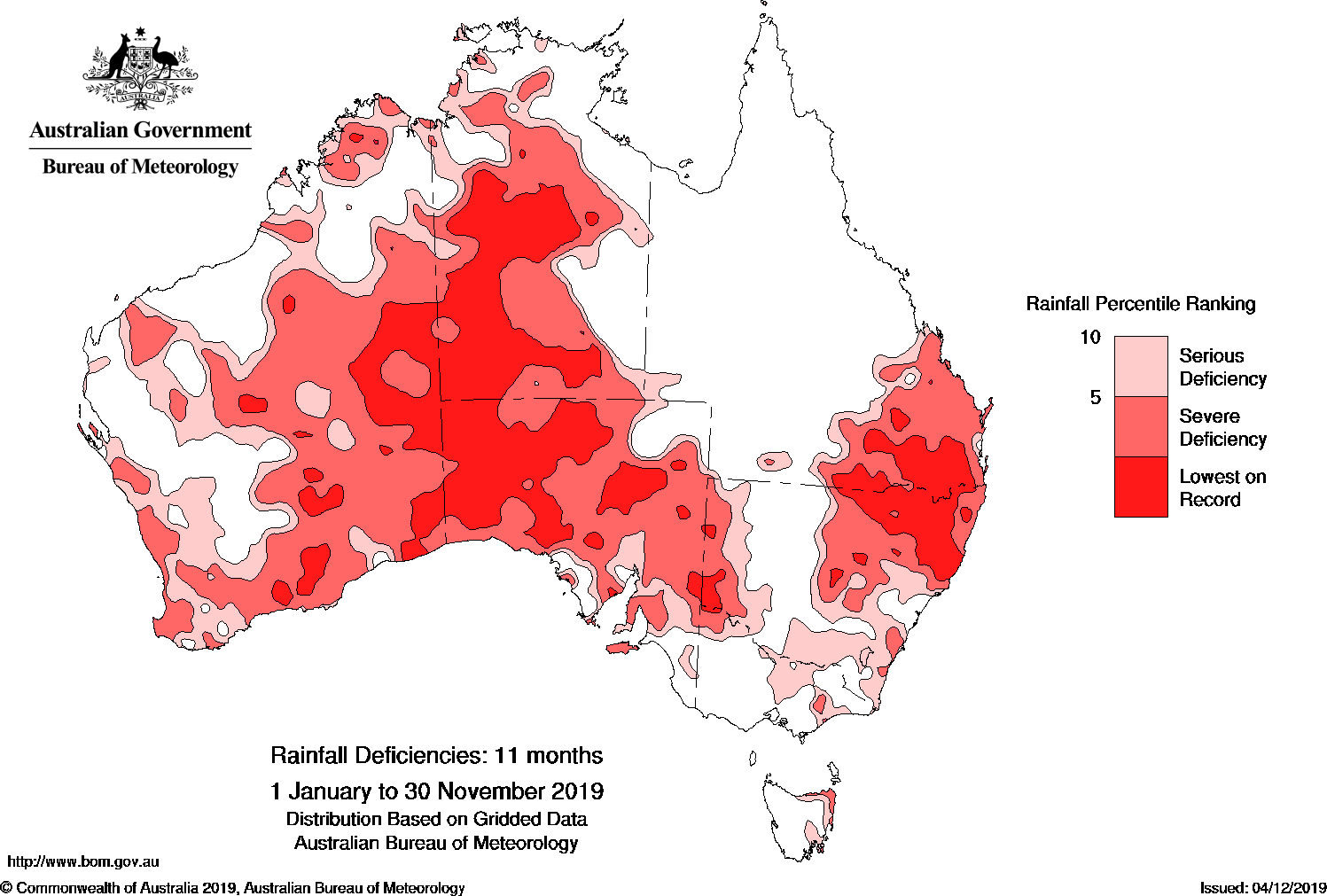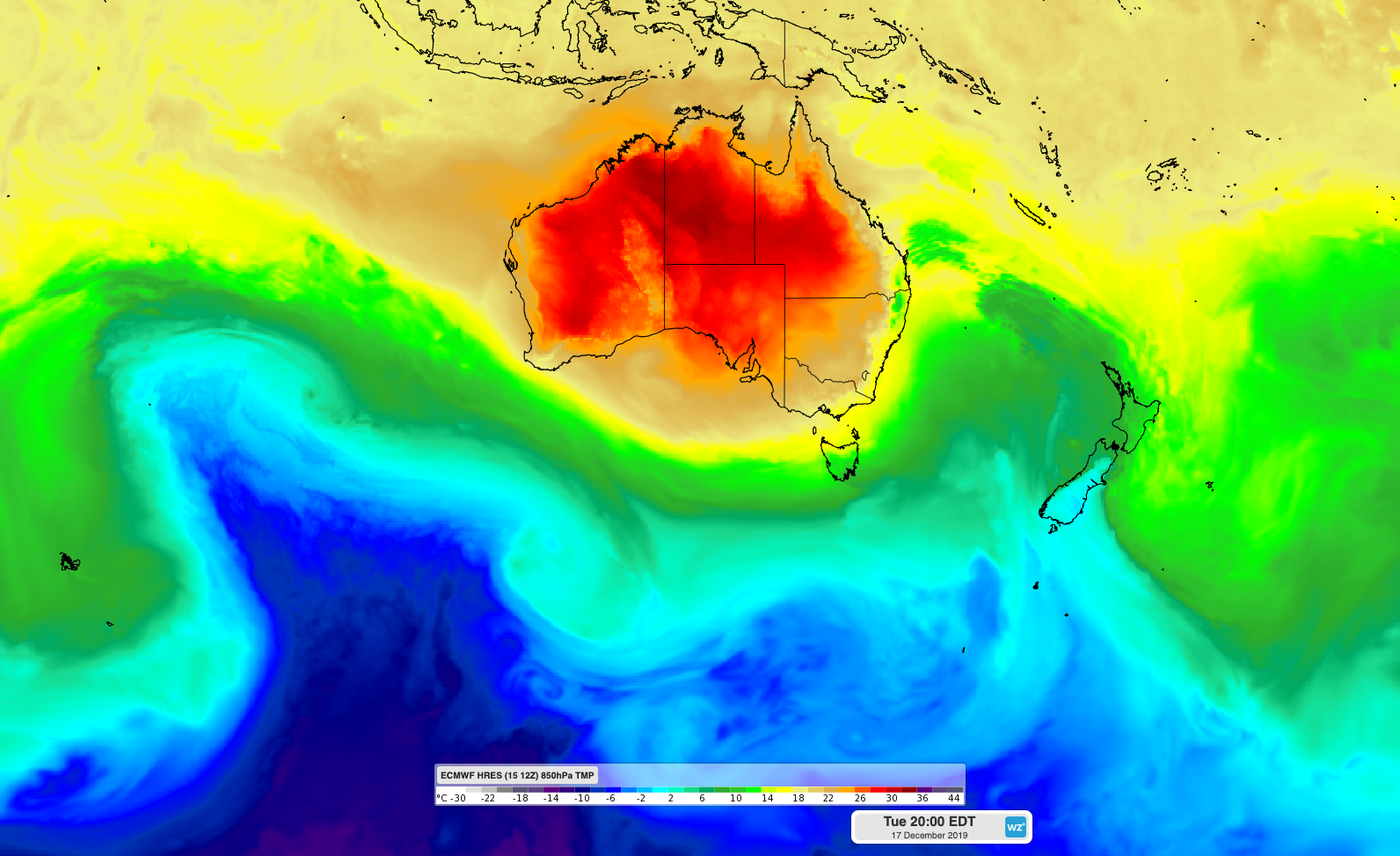Australian temperature records to watch this week
An exceptionally hot air mass will spread over Australia this week, challenging records for individual locations, states and the country as a whole.
Despite only being the third week of summer, a number of factors will align to cause record-challenging heat in Australia during the coming days.
The sun will be at its highest point in our sky this Sunday, on the date of the summer solstice. This is also the longest day in Australia, meaning the amount of heating caused by solar radiation is maximised at this time of year.
The summer solstice this year will occur amid the backdrop of one of our country's worst droughts on record. Depleted soil moisture and exposed earth across large swathes of the country are allowing the ground to absorb more of the sun's energy. In the absence of plants and moisture, the ground will act like a sponge for heat this week.

Image: Rain deficiencies during the first 11 months of 2019. Source: Bureau of Meteorology.
Above the ground, a stubborn upper-level high pressure ridge will deflect cold fronts away from Australia throughout the next week.

Image: ECMWF-HRES model showing a mass of hot air over Australia on Tuesday, December 17th, while cold air stays to the south of the country.
The combination of peak annual solar heating, depleted ground and atmospheric moisture, a stagnant weather pattern and an absence of cold Southern Ocean air intrusions will allow heat to proliferate over Australia this week. This cocktail of heat-producing features is also happening against the background of a prolonged warming trend in Australia, which has been observed by the Bureau of Meteorology over the last century.
Forecast models are showing us that this week's heat is likely to challenge records in a number of states and territories. It's likely to break December records in some areas and could be the hottest weather some Australians have seen in their lifetime. For some places, it could even rival any temperature previously measured by official standardised meteorological equipment since the early 1900s.
According to the Bureau of Meteorology's online climate database, these were Australia's maximum temperature records as of 9am on Monday, December 16th:
- Australia: 50.7 degrees - Oodnadatta, SA on January 2nd, 1960
- SA: 50.7 degrees - Oodnadatta on January 2nd, 1960
- WA: 50.5 degrees - Mardie on February 19th, 1998
- NSW/ACT: 49.7 degrees - Menindee on January 10th, 1939
- QLD: 49.5 degrees - Birdsville on December 24th, 1972
- VIC: 48.8 degrees - Hopetoun on February 7th, 2009
- NT: 48.3 degrees - Finke on January 1st and 2nd, 1960
- TAS: 42.2 degrees - Scamander on January 30th, 2009
It's worth pointing out that most of Australia's state heat records have occurred in January and February. It would be significant if any of these records were broken by this heatwave in mid December.